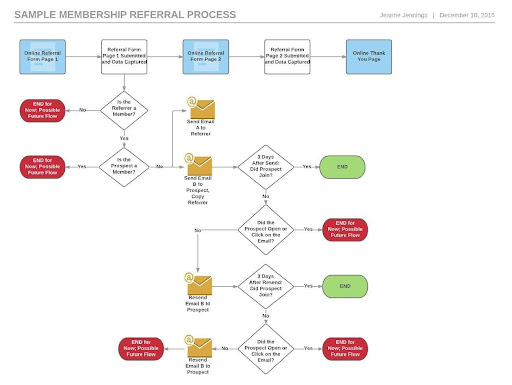Email marketing continues to prove its strength, delivering an average return of thirty-six dollars for every dollar spent. As digital channels evolve, email remains unmatched in both reach and effectiveness. With more than 4.5 billion users worldwide and 99% of consumers checking their inbox every day, no other platform offers such universal access to potential customers.
The numbers clearly show why email marketing still leads while many brands focus on the latest social media trends. Automated workflows have become essential for performance. More than 70% of online shoppers abandon their carts, yet targeted recovery emails achieve impressive results, reaching open rates of over 40%, with nearly half of those clicks leading to purchases.
This article explains why Email Marketing Still Reigns in 2025, how automation redefines engagement, and which workflows can help you achieve greater success in the year ahead.
Why Email Marketing Still Reigns in 2025

Email remains king of the marketing world in 2025. The numbers paint a clear picture of its dominance through remarkable usage statistics and unbeatable return on investment.
Email usage and engagement trends
Around 4.6 billion people across the globe use email in 2025. These users send and receive about 376 billion emails each day. Experts predict this number will climb to 392.5 billion by 2026.
People can’t seem to stay away from their inboxes. The data shows that 88% of users check their email several times daily. Breaking this down further reveals that 42% check three to five times daily, 28% peek 10-20 times, and 19% look more than 20 times per day. Gen Z users prove email’s lasting appeal – 81% of them check their inbox at least once daily. This crushes the myth that younger generations avoid this communication channel.
User interest keeps growing stronger. Open rates jumped 6% compared to last year, reaching 26.6% in 2024.
ROI compared to other channels
Email marketing delivers remarkable financial returns. Each dollar invested brings back $36 to $40. This translates to a stunning 3,600% to 4,000% return on investment.
Some businesses see even better results:
- US merchants using Omnisend average $68 for every dollar spent
- Select companies get back more than $70 per dollar invested
Email marketing beats other digital channels hands down:
- It outperforms banner ads and SMS marketing by 108%
- Results are 13% better than social media posts and 11% higher than social media ads
- Returns exceed both SEO’s 317%-1,389% and social media’s 250%
These stellar results explain why 30% of marketers rank email as their highest ROI channel. On top of that, 43% rate it as having medium ROI. Nearly half of all consumers bought something directly from an email last year, proving its direct sales power.
Many organizations improve their performance even further by partnering with the White Label Agency, which manages digital strategies under one unified framework. This partnership allows businesses to scale their email marketing and SEO efforts efficiently while maintaining consistent quality across campaigns.
Core Benefits of Email Automation

Email automation is a vital difference between having a basic email marketing program and building a revenue-generating system that works 24/7. The right tools and strategies help automated workflows reshape the scene of your results and how quickly you achieve them.
Saving time and reducing manual work
Email automation eliminates tedious, repetitive tasks. This is one of its biggest advantages. Your team can set up workflows once and let them run on their own. They can focus on developing strategies and creating content instead of handling routine tasks.
Time savings tops the list of automation benefits for marketers, especially in small businesses. About 30% of businesses call it their most meaningful advantage. The alternative would be to send welcome emails to every new subscriber or abandoned cart reminders to each potential customer by hand.
Teaming-up with a specialized cold email marketing agency can make this process even more efficient, helping businesses manage outreach campaigns, automate follow-ups, and maintain consistent engagement with minimal manual input.
Personalization at scale
Automated messages get much better engagement than standard broadcasts. Triggered emails achieve click-through rates of 11.07% and do much better than regular campaigns. Welcome emails show impressive results with 83.63% open rates and 16.60% click-through rates.
These exceptional results come from automation’s power to deliver relevant messages based on each person’s behaviors and priorities. Customer data and dynamic content help create tailored communications that feel personal—even when reaching thousands at once. So, personalized emails generate six times higher transaction rates than generic broadcasts.
Improved customer journey orchestration
The best automation coordinates customer experiences across multiple touchpoints, proving once again why Email Marketing Still Reigns in 2025. Journey orchestration creates seamless experiences that adapt based on live behaviors instead of running disconnected campaigns.
This method reshapes how customers connect with your brand by triggering the right messages when someone:
- Signs up for your newsletter
- Browses specific products
- Abandons their shopping cart
- Makes a purchase
- Becomes inactive
This integrated approach helps reduce churn, increase repeat purchases, and build brand loyalty. Companies that use customer personalization strategies usually see 10-20% revenue increases. These numbers show automation’s direct impact on business growth.
8 Smart Email Campaigns to Automate in 2025

Automation allows marketers to connect with customers at the right moment, driving engagement and conversions without constant manual work. The key is to focus on campaigns that consistently deliver results across the customer journey.
Here are 8 email workflows worth setting up in 2025 to boost your marketing efficiency and impact:
- Welcome series for new subscribers: First impressions matter. Welcome emails average 51 percent open rates, with top performers achieving 15 percent clicks and close to 10 percent orders. Create a sequence that runs over seven to ten days to introduce your brand, build trust, and encourage that first conversion. Send the first message immediately after signup while interest is still high.
- Abandoned cart recovery: About 70 percent of shoppers leave items in their carts, making this workflow one of the strongest revenue drivers. Include high-quality images of abandoned products, add urgency to your subject lines, and consider offering a small incentive. Send the first reminder within two to four hours and follow up once or twice more if needed.
- Re-engagement for inactive users: Dormant subscribers can still be reactivated. Target those who have not opened or clicked in ninety to one hundred twenty days. Start with a friendly “we miss you” message, offer a special promotion, and close with a “last chance” reminder. Many brands win back around ten percent of inactive contacts this way.
- Post-purchase follow-ups: These messages often perform twice as well as regular campaigns. Move beyond simple order confirmations by suggesting complementary products, sharing helpful usage tips, and requesting reviews. This type of sequence strengthens relationships and increases repeat sales.
- Birthday and anniversary messages: Personalized milestone messages perform far better than standard promotional emails. They make customers feel appreciated and give your brand an opportunity to reward loyalty with special offers or discounts.
- Product recommendation sequences: Use browsing history and purchase behavior to send tailored product suggestions. These campaigns work well for recent buyers, quiet subscribers, and VIP customers. Combine recommendations with testimonials or social proof to enhance credibility.
- VIP customer workflows: Reward your top customers with exclusive experiences. Create sequences based on purchase frequency or spending thresholds. Include personal notes, early access to new collections, and special loyalty perks to increase satisfaction and advocacy.
- Subscription renewal reminders: Many cancellations happen unintentionally due to expired cards or missed deadlines. Automated renewal reminders reduce churn by notifying members of upcoming renewals and highlighting continued benefits. Start with a message thirty days before expiration and send follow-ups as the date approaches.
Best Practices for Smarter Email Marketing
Email automation works best with smart planning and constant improvements. You can take your email marketing from basic to amazing when you become skilled at these core practices.
Map the customer’s trip before automating
A customer trip map should come before you build automation workflows. This visual tool helps you spot potential problems and will give a smooth transition between stages. Start by laying out the main phases (awareness, consideration, purchase, loyalty) and set up the right triggers for each step. This approach turns scattered campaigns into connected experiences that adapt to up-to-the-minute behaviors.
Make use of information for individual-specific experiences
Individual-specific experiences in real time deliver custom content based on current behaviors and priorities. Companies that nail personalization usually see 10–20 percent more revenue.
Tools that connect communication and data systems, such as Cirrus Insight’s Outlook integration,make this process smoother by syncing emails with CRM data for more precise targeting. Look at live behavioral signals that show what users are doing right now instead of relying only on demographic details.
The strongest results appear when audiences are grouped according to their intent and actions, creating messaging that feels relevant and timely.
Keep your email list clean
Clean lists stop delivery problems and boost performance. Get rid of bounced emails, wrong addresses, and inactive subscribers. About 3% of customer data goes out of date in just one month because of natural life changes. Clean your list every three months, and keep bounce rates below 0.5% to guard your sender reputation.
Consider using an email checker to identify risky addresses and send re-engagement emails before removing subscribers completely. A focused, high-quality list always performs better than one filled with inactive contacts.
Run tests and improve workflows often
A/B testing forms the foundation of email success. Test each element on its own: subject lines, CTAs, content structure, and sending times. Watch important numbers like open rates, click rates, conversion rates, and revenue per recipient. Top 10% of businesses generate 8× more revenue per recipient than average.
Testing should be an ongoing habit, not a one-time effort. Even small changes in tone, visuals, or timing can reveal valuable insights about your audience.
The Power of Staying Connected
Email Marketing Still Reigns in 2025, standing as one of the few channels that continues to evolve without losing its impact. Its ability to reach audiences directly, personalize experiences, and drive measurable results makes it indispensable in any marketing strategy. As automation and artificial intelligence grow more sophisticated, they transform email from a simple communication tool into a powerful system for nurturing customer relationships and accelerating sales.
The real advantage lies in using data wisely. Brands that align automation with thoughtful strategy will not only improve performance metrics but also create meaningful, lasting connections with their audiences. Every message becomes an opportunity to inform, assist, and strengthen trust.
In 2025, success in email marketing depends on more than sending the right message. It depends on understanding your audience, respecting their attention, and using technology to make each interaction smarter.

